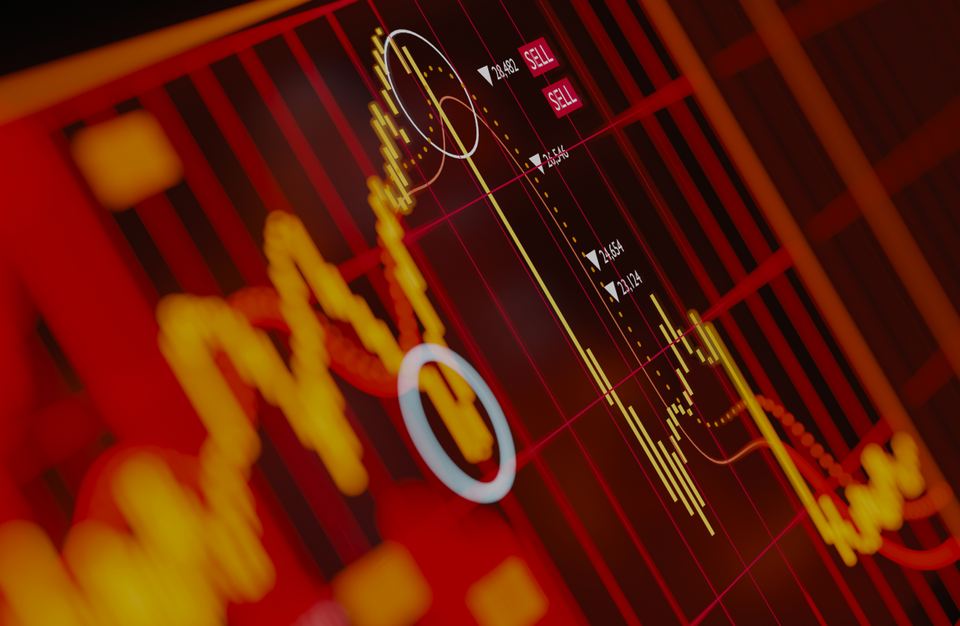Will Bond Implied Volatility MOVE Crypto?
US Treasuries implied volatility is at the highest level since 2009, while implied volatility of stocks and crypto is relatively muted. Will bond-implied volatility spill over into other assets?
Implied volatility is too different between asset classes
US Treasuries' implied volatility has skyrocketed this year. ICE BofA MOVE Index, which is the most popular measure of US Treasuries implied volatility, rallied significantly above the pandemic levels, reaching the highest value since the aftermath of the Great Financial Crisis.
ICE BofA MOVE Index

Oddly, there is nothing comparable in other asset classes. Stocks implied volatility, as measured by the VIX index, is higher than average but well within a recent range and much below the pandemic levels.
VIX Index

Crypto-implied volatility has a much shorter history, but its performance looks more similar to stocks than bonds. Bitcoin implied volatility is near the lowest levels this year, and Ethereum’s one seems subdued too.
Bitcoin DVOL Index

Ethereum DVOL Index

Will bonds affect other assets?
What’s wrong with US Treasuries and why are they so different from other asset classes this year? The most obvious answer is that the bond plunge has been unprecedented in recent history, and a very high realized volatility has driven the implied one. This year US Treasuries have entered the first bear market in a generation.
iShares 7-10 Year Treasury Bond ETF (IEF)

A reason for the bond's bear market, however, suggests that it may not be limited to this asset class only. Rapid inflation has forced the Federal Reserve to hike rates aggressively and to engage in the so-called quantitative tightening, “burning” money via its balance sheet reduction. US Treasuries are the primary vehicle used by the Federal Reserve to tighten monetary policy, so US Treasuries feel the pain first. Still, other markets may follow when a higher rate effect reaches the economy.
It’s an imprecise relationship, but monetary policy tends to lead to the stock market’s implied volatility. Rapid tightening often suggests higher implied volatility in the next 2-3 quarters. The spread between 2-year and 10-year US Treasuries yield is a popular measure of monetary policy’s tightness because it shows how much short-term rates, directly influenced by the current monetary policy stance, differ from mid-term rates, reflecting nominal economic growth potential.
2-year and 10-year US Treasuries yield spread and VIX index

Given the monetary policy’s lag and an epic disconnect between the implied volatility of stocks and bonds, I believe that the stock market’s implied volatility is indeed underpriced.
Effect on crypto
Does it mean that crypto volatility is cheap like that of stocks? Unlike stocks, crypto has no fundamentals linking it to economic growth or decline, so it may not be influenced by an economic slowdown and a recession. For example, a stock may be slammed by downgrading a profit forecast because of the weaker expected performance of the underlying business. And after falling by 60% this year, Bitcoin has arguably already priced in a lot of negative news. Moreover, this year's economic worsening is particularly pronounced in emerging market countries, and that may even benefit crypto due to capital flight into crypto by locals looking for a way out of the monetary doom.
Besides, the relationship between spot prices and implied volatility is far less straightforward for cryptocurrencies than for stocks. VIX is high when stocks dip and is usually subdued when stocks rally. DVOL indexes may be high both because of leveraged funds’ liquidation (like in June) and because of bullish speculative bets (like before the Merge). The latter crypto example of higher implied volatility during a rally (before the Merge) is a rarity in the stock market.
Conclusion
The very high implied volatility of US Treasuries seems a warning sign for relatively low implied volatility of other assets. I think that the implied volatility of US Treasuries will sooner or later spill over into the stock market, but not sure about crypto. Cryptocurrencies do not depend on the economy as much as stocks and may even benefit from macro worries in emerging market countries. Still, I think that the current low implied volatility in the cryptocurrency space differs too much from a broader macro picture manifested by the high implied volatility of US Treasuries.
*This communication is intended as strictly informational, and nothing herein constitutes an offer or a recommendation to buy, sell, or retain any specific product, security or investment, or to utilise or refrain from utilising any particular service. The use of the products and services referred to herein may be subject to certain limitations in specific jurisdictions. This communication does not constitute and shall under no circumstances be deemed to constitute investment advice. This communication is not intended to constitute a public offering of securities within the meaning of any applicable legislation.




